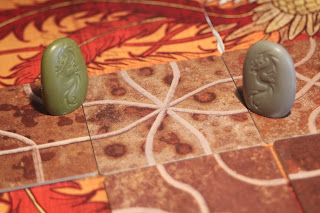The scholars of financial markets say there are some upward anomalies, regarding positive returns, which occur in January. This is known since 1942 (!), is more notorious in small and young companies, but it still isn’t fully understood.
Christmas optimism that extends into the coming year, application of results, search for non-traditional investment opportunities, incomplete information. Whatever the causes, the market seems unable to eliminate the phenomenon, which keeps repeating itself.
They call it: The January Effect!
This is, therefore, an appropriate moment to return to the stock market, in a version of the 1970’s, from Portuguese Publisher Karto.
The portfolio of shares, duly signed, dated and beautifully illustrated,
consists of titles, representing 1, 5 or 10 stocks, from five Portuguese
renowned companies, all from different sectors:
TAP –
Transportes Aéreos Portugueses, the flagship airliner;
Lisnave –
Estaleiros Navais de Lisboa, Lisbon shipyards;
Sociedade Comercial
Guérin, car importer and seller;
Companhia de
Seguros A Mundial, insurance company;
Banco Pinto & Sotto Mayor, bank.Each player-investor seeks to obtain the maximum return, multiplying the 25000 Kartos, the local currency, held at the beginning of the game. In order to do that, one has to buy and sell stocks, change share prices, receive bonus, if lucky enough, or, more often, pay taxes on capital or on shares.
There may be also extra dividends for the holders of securities whose prices rocket and go over the top of the scale. And bankruptcies, whenever quotations fall down below the acceptable minimum.
Pay attention, for there are no exclusivity rights. Each player may hold shares from any number of companies. Temporary alliances, for mutual benefit or prejudice to a third party, are just around the corner!
Prices do not vary randomly, but as a decision of each player in turn: first, through the card he picks from his hand; then, through the definition of the actual meaning of each star on it – stars representing stocks at player’s choice.
Double or halve the price; raise two titles 800 kartos and lower three by 500; raise TAP 600 kartos, and move two titles down, by 300.
Downgrade share prices in order to buy cheaper, or to harm opponents. Raise them up to make a profitable sell out, afterwards, or to reduce the profit perspective for those who buy expensive shares. Focus your investments in one or two titles, to have greater control. Diversify and be exposed to constant fluctuations. And adapt the strategy to the unpredictability of card drafting.
Cards also determine the motion of a token on the outer band of the board. And it will be the next player in turn the one who will bear the responsibility to comply with the instructions of the space where the token ended!
Another element to consider for choosing the right cards, when the attribution of bonuses to opponents, paid in shares or in cash, the settling of different types of taxes, or even the impossibility to perform any transactions, is at stake.
A game in which you need to do some math, as shown in the rules. Adding and subtracting, a few multiplications and a few percentages (10% or 50%, nothing too complicated)..
Pssst ... don't use your mobile phones! It’s just arithmetic’s 101, to be worked out by the players themselves or, if you prefer, by a player who may take the role of banker.
A simple and fun game, with a scent of a return to the past.
Jogo da Bolsa. [The Stock Exchange Game]. Karto.



































